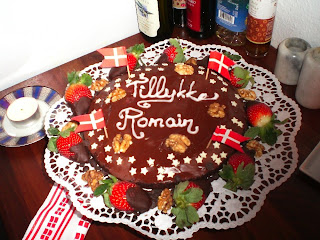Today, during a walk in Copenhagen with friends, we visited the famous Rundetårn (= round tower).

This tower is actually the spire of the Trinitatis Kirke. King Christian IV ordered its construction in 1642. This tower was the first section of the Trinitatis complex, which had to gather the three most important institutions for scholars and erudites of the seventeenth century: an observatory, a church and a university library. This observatory is even the oldest in Europe still working and the library, located above the roof of the church is now an exhibition hall.
To get to the top, we don't use any stairs, but ... a helical corridor!

This ramp is unique in the history of European architecture. Its length is 209 m, and it turns 7.5 times around the core.
The legend says that in 1716 Peter the Great, Tsar of Russia, climbed to the top of the tower on horseback, while his wife was driven in a carriage drawn by six horses!
Of course the main interest of the Rundetårn not its stairs without steps, but the beautiful 360-degree view form the roof (34.8 m above the street):



This tower is one of the most popular buildings in the heart of the Danes. In Denmark, the height of buildings is often compared to the Rundetårn's.
This monument is today, thanks to the events taking place there, a lively element of the cultural environment of Copenhagen.






